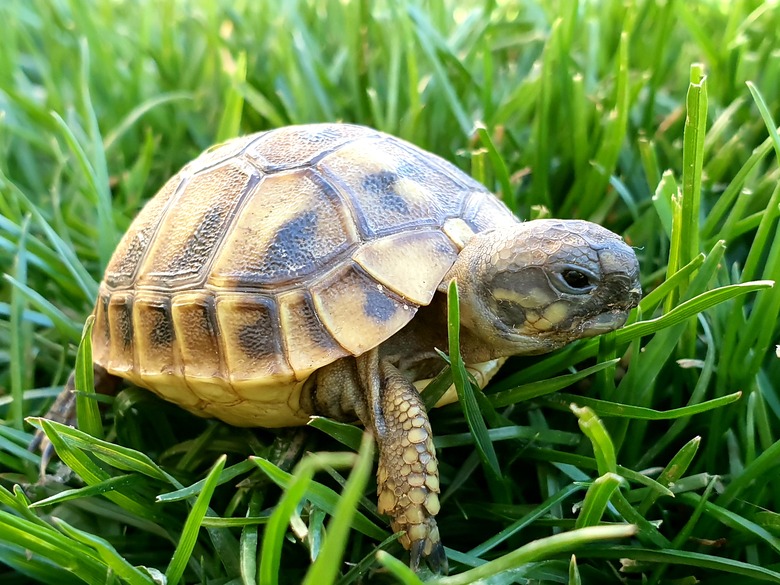How To Get A Turtle Out Of Its Shell
Unlike in cartoons, your turtle can't pop completely out of his shell and run around without it. After all, the shell is part of the turtle's rib cage and skeleton, protecting his vital organs inside. However, if your pet turtle has a habit of clamping his legs and tail tightly against his body and pulling his head back into his shell, you can train him to feel comfortable enough to come out of his shell.
Be calm and gentle
Be calm and gentle
Turtles by nature don't appreciate being picked up and handled, but they can become used to it over time. It's likely that your turtle will immediately snap her legs alongside her body and fold her head and tail inside the shell as soon as you touch her. She may sit tightly clamped the entire time you're holding her in your hands, making for a rather disappointing turtle bonding experience.
Let your new turtle get used to you over time before you attempt to handle or touch her. Turtles don't have good hearing, but their tympanic membranes behind their eyes let them become familiar with the sound of your voice. Use calm, soothing tones when you're around your turtle.
Move with slow, easy movements. Sudden movements will trigger your pet to think you're a predator, especially if you're reaching down to grab her. This could lead your turtle to reflexively bite you if she feels she needs to protect herself.
Remove stressors to get a turtle out of his shell
Remove stressors to get a turtle out of his shell
Even though your turtle is safe inside his terrarium, he might feel unsafe. Create a calm, relaxing environment for your pet. Turn off loud music or TV and lock curious dogs and cats out of the room.
Your turtle's environment might also be stressing him. If the water is chemically imbalanced or is getting dirty, this can cause your turtle to clamp tightly inside his shell whether you're trying to handle him or not. Adding or removing tankmates, a temperature change of more than 5 degrees in 24 hours, or relocating their tank is also anxiety-inducing for turtles.
If your turtle is new to your home, give your turtle time to settle in without expecting a lot of interaction. If your turtle is suddenly acting agitated or trying to escape his tank, look for and remedy the causes of his stress before attempting to handle or train him. A turtle doesn't just "get over" the stress of being moved, going to the vet, or other stressful experiences. Their cortisol (stress hormone) levels can remain high for up to four weeks afterward.
Give her a treat
Give her a treat
Present your turtle with a special treat each time you interact with her. Talk to her gently and place an appropriate goodie for her diet in front of her. Although most domestic turtles don't typically bite, you can place the food bit in front of your turtle using tongs. This also prevents your turtle from acquainting your hand with food, which can incite her to bite at your fingers whenever your hand descends into the tank.
Most turtles are omnivorous, which offers a lot of options and variety when it comes to treats. Small bits of chopped apple, blueberries, corn, or lettuce are all appropriate treats for pet turtles. Freeze-dried insects, shrimp pellets, or commercial turtle treats are other things your turtle will likely enjoy.
Remove your hand from the tank and let your turtle eat the treat in her own time. As your turtle learns to equate your presence with good things, chances are you'll see your turtle out of her shell, eagerly anticipating your arrival.
